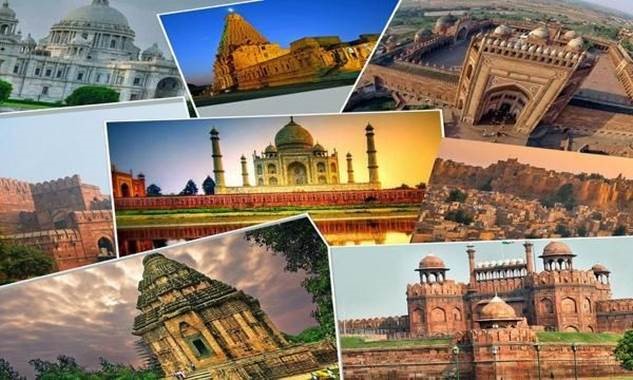Description

Disclaimer: Copyright infringement not intended.
Context
- The Archaeological Survey of India (ASI) has decided to delist 18 “centrally protected monuments”.
Details
Background
- The Archaeological Survey of India (ASI) is tasked with protecting and preserving monuments and archaeological sites of national importance under various acts, including The Ancient Monuments Preservation Act, 1904, and The Ancient Monuments and Archaeological Sites and Remains Act, 1958 (AMASR Act).
Delisting Decision
- Reasoning: The ASI has decided to delist 18 centrally protected monuments due to their assessed lack of national importance. These monuments were previously categorized as "untraceable" by the ASI.
- Monuments Affected: Some notable monuments facing delisting include:
- A medieval highway milestone recorded as Kos Minar No.13 at Mujessar village in Haryana.
- Barakhamba Cemetery in Delhi.
- Gunner Burkill’s tomb in Jhansi district.
- A cemetery at Gaughat in Lucknow.
- The Telia Nala Buddhist ruins in Varanasi.
- Implications of Delisting:
- Delisting means that these monuments will no longer receive conservation, protection, or maintenance efforts from the ASI.
- Activities such as construction and urbanization near these delisted monuments can proceed without the restrictions imposed by the AMASR Act.
- Public Input: The delisting process allows for a two-month window for the public to submit objections or suggestions regarding the delisting of these monuments.

Legal Basis
- AMASR Act, Section 35: This section empowers the Central Government to declare that a monument has ceased to be of national importance. This declaration can lead to the delisting of the monument.
- Gazette Notification: The decision to delist the 18 monuments was formalized through a gazette notification issued on March 8.
Untraceable monuments
- When the Archaeological Survey of India (ASI) classifies a monument as "untraceable," it signifies that the monument's current physical location is unknown or uncertain.
- This classification typically arises due to factors such as urbanization, encroachments, construction projects like dams and reservoirs, or neglect over time.
- As a result, these monuments may have deteriorated or been obscured to the extent that their existence is not readily discernible.
Factors Contributing to Monumental Loss:
- Urbanization and Encroachments: Rapid urbanization often leads to the encroachment upon historical sites, causing them to be obscured or even destroyed by new developments.
- Construction Projects: Infrastructure projects such as dams and reservoirs can result in the submergence or displacement of historical monuments, making them difficult to locate.
- Neglect: Some monuments may have deteriorated over time due to neglect, lack of maintenance, or insufficient resources for preservation efforts.
ASI's Responsibilities and Actions:
- Regulatory Framework: The ASI operates under The Ancient Monuments and Archaeological Sites and Remains Act, 1958 (AMASR Act), which mandates the protection and preservation of monuments and archaeological sites of national importance.
- Regular Inspection: The ASI is mandated to regularly inspect protected monuments to assess their condition and ensure their conservation and preservation.
- Enforcement Measures: In cases where encroachments are observed, the ASI has the authority to take enforcement measures, including filing police complaints, issuing show-cause notices for the removal of encroachments, and coordinating with local administrations for their demolition.
Lost Monuments in India
Number of Lost Monuments:
- December 2022 Report: The Ministry of Culture informed the Parliamentary Standing Committee on Transport, Tourism, and Culture that out of India's 3,693 centrally protected monuments, 50 were missing. These missing monuments were categorized as follows:
- Lost to rapid urbanization: 14 monuments
- Submerged by reservoirs/dams: 12 monuments
- Untraceable: 24 monuments
- CAG Report 2013: A report by the Comptroller and Auditor General (CAG) of India in 2013 highlighted that at least 92 centrally protected monuments across the country were missing.
- Lack of Comprehensive Survey: No comprehensive physical survey of all monuments had been conducted after Independence.
- CAG Findings: The CAG report raised concerns about the ASI's lack of reliable information regarding the exact number of monuments under its protection.
- Efforts to Address: The Culture Ministry accepted the recommendation from the CAG report to conduct periodic inspections of each protected monument by suitably ranked officers.

Status of Missing Monuments:
- Identification Efforts: The ASI made efforts to identify missing monuments. According to the Parliamentary panel, out of the 92 monuments declared missing by the CAG, 42 were identified by the ASI.
- Untraceable Monuments: Despite efforts, 24 monuments remained untraceable. These monuments are scattered across various states, including Uttar Pradesh, Delhi, Haryana, Assam, West Bengal, Arunachal Pradesh, and Uttarakhand.
- Challenges in Identification: Some missing monuments, such as inscriptions, batteries, and tablets, may not have fixed addresses, making their location difficult. They could have been moved or damaged over time.
MUST READ ARTICLES:
https://www.iasgyan.in/daily-current-affairs/house-panel-report-on-asi#:~:text=The%20ASI%20was%20founded%20during,nation's%20historical%20sites%20and%20artifacts.
https://www.iasgyan.in/daily-current-affairs/ancient-monuments-act
|
PRACTICE QUESTION
Q. The classification of monuments as "untraceable" reflects the challenges faced in preserving India's rich historical heritage amidst rapid development and changing priorities. Discuss. (250 Words)
|















